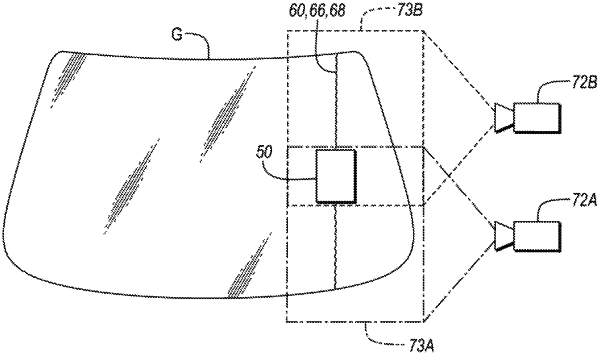| CPC G06T 7/0006 (2013.01) [G01B 11/24 (2013.01); G01N 21/6456 (2013.01); G01N 21/958 (2013.01); G06T 7/593 (2017.01); H04N 13/111 (2018.05); H04N 13/128 (2018.05); H04N 13/243 (2018.05); H04N 13/254 (2018.05); G01N 2021/9586 (2013.01); G06T 2207/10064 (2013.01); G06T 2207/30164 (2013.01)] | 20 Claims |

|
1. An optical inspection system comprising:
an ultraviolet laser and associated optics forming a planar laser sheet directed to a glass sheet, wherein the planar laser sheet intersects a surface of the glass sheet thereby causing the surface of the glass sheet to fluoresce and form a visible wavelength line on the surface;
a first camera having a first image sensor for detecting the visible wavelength line across a portion of a width of the glass sheet;
a second camera having a second image sensor for detecting the visible wavelength line across another portion of a width of the glass sheet, wherein the first camera and the second camera have separate and overlapping fields of view on the surface of the glass sheet; and
a control system configured to (i) receive image data indicative of the visible wavelength line from the first camera, (ii) analyze the data from the first camera to determine first and second coordinates in a first series of coordinates associated with the line, (iii) triangulate a third coordinate associated with each of the first and second coordinates in the first series of coordinates, (iv) create a first three-dimensional map of the surface of the glass sheet as a function of the first series of coordinates, (v) receive image data indicative of the visible wavelength line from the second camera, (vi) analyze the data from the second camera to determine first and second coordinates in a second series of coordinates associated with the line, (vii) triangulate a third coordinate associated with each of the first and second coordinates in the second series of coordinates, (viii) create a second three-dimensional map of the surface of the glass sheet as a function of the second series of coordinates, and (ix) form a combined map using the first map and the second map.
|